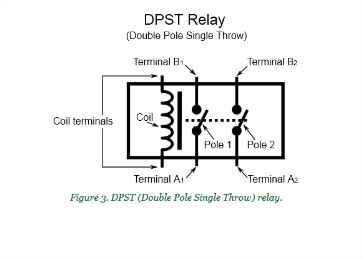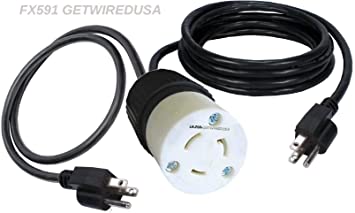From the spec sheet:
Operating Temperature: 32 - 104° F (0 - 40° C)
I typically find that the specs are safety figures.. So you will probably get wider ranges.. But this is what it is rated for
From the spec sheet:
Operating Temperature: 32 - 104° F (0 - 40° C)
I typically find that the specs are safety figures.. So you will probably get wider ranges.. But this is what it is rated for
"Obvious for the engineers, not so obvious to us regular users"
I'm an engineer and can say that it was not obvious! I totally thought this meant contact behavior  Anyways, thank you for posting this information and working with this community of users. I'll try to update firmware.
Anyways, thank you for posting this information and working with this community of users. I'll try to update firmware.
Anyone figure out if you can monitor the switch inputs without controlling the relay? I know you can turn off manual mode, but I would like to use those inputs to monitor other things like a contact switch (and not affect the relay). I don't see a way to just monitor the input.
Goal is to monitor inputs from from three devices in a barn(door sensors), but relays are only controlled by HE for items like a heat lamp, fan etc. unrelated to the switch inputs.
Thanks.
There's currently no way to separate the inputs from the outputs on the ZEN16. You can do that on the Fortrezz Mimo device though.
Well it's 4 months later and I still haven't done this project, but this week!
So just to clarify one more time:
I have an existing 240V 20A circuit wired to a single outlet for my GPU mining rig.
I want to put a smart switch and power monitoring into this setup.
So if I unhook the wires going to the existing switch (2 hots, one ground) and hook them to this relay and then run new wire from the relay to the existing switch - this will allow me to do what I need safely?
I assume I will mount this in some additional box attached to the wall connected via conduit to the existing switch.
Thanks for any prompt reply
The ZEN16 doesn't monitor power so it sounds like it's not the best fit here. You could explore the Aeotec Heavy Duty Switch here but you'd need to get in touch with their support for wiring details.
If I omit the power monitoring need (I am considering doing a multi-circuit CT based power monitoring system), would the remainder of what I describe be OK?
If the switch you currently have is connected to power on one terminal and to the load on the other terminal, then you would take these 2 and connect them to the R3 terminals on the ZEN16. You would leave the ground on your existing wall switch and connect the now empty terminals on the switch to the switch terminals (Sw3) on the ZEN16 MultiRelay. Please remember to turn the power off at the breaker when handling the wires and consult a licensed electrician if you're not sure about any of the above described steps, including identifying each wire in the installation.
The ZEN16 also needs a low-voltage power source, it cannot be powered by 120 V.
There is no switch, it's a hardwired dedicated 240v 20 amp outlet on a 30 amp circuit (2 hots, 1 ground, no neutral). I am trying to be able to switch it off remotely based on smart input (temperature gets too hot in the area, power to outlet gets cut off).
In that case, I'd recommend getting in touch with our support with these details and wiring images of how the outlet is installed so we can have a better understanding of the layout. There's always neutral available in every electrical installation so we'll need to get more technical with the support team to clarify on a few details and provide you with accurate instructions for the set-up.
Standard 240V outlets often do not have a neutral:
Mine is L6-20R as noted below:

@2005 I think what you are showing here would be 2-Phase connection, not necessarily a 240V connection. For 230 Volts (for example), these can be connected as Single Phase with +V on X or Y, common on the other pin, and Ground on the G.
But you are right, a "standard" 208V (Oven/Dryer) connection in the US, would have no Common.
On the other hand, I'm certainly not an Electrician, although I've wired a lot of L6-20R and L6-30R connections for technical equipment overseas...lol -- almost certainly not to code...
S
I would use the ZEN16 to enable/disable a DPST relay instead. Because if you cut 1 leg only, you still have 120V on one... If you use a DPST relay, you'll have 2 advantages:
@agnes.zooz do you agree on that ?

Neutral available: yes
Neutral used: not obligatory
in USA/Canada, if you have high power units (some heaters, washers, stoves, saws, e-car chargers, A/C units, geothermal units), they are using both legs and the voltage between those is 240V.
When you use the neutral, you are using only 1 leg and the voltage difference between this leg and neutral is 120V
@tagging @agnes.zooz
Another (BAD - see below) idea:
you could separate the power into 2 Zooz ZEN15 to cut/monitor each of the leg, measure power on each and rejoin them into a 240V female plug.
Leg1 => ZEN15 (leg1 and neutral) => leg1
Leg2 => ZEN15 (leg2 and neutral) => leg2

Using a relay here would be the best solution and something we were going to suggest as well since we're dealing with a 2-phase install. This type of relay would work well here.
That wouldn't work unfortunately since you'd still have the same line flowing through both of the ZEN15 plugs which would expect line and neutral as a 120 V device. In other words, a single 240 V device is not the same as 2 120 V devices. Anything you connect to the outlet directly needs to be rated for 30 A to to ensure a safe installation.
My answer could be wrong (language barrier on my side). I didn't want to plug 2 ZEN15 on the same line, but on 2 separate circuits,to have 15A on each leg.
You can split a 240V cable on the same dual outlet, by cutting the little copper blade between the 2 junctions, you have then 2 separate circuits on the same outlet. But you need to check if this way of work is accepted/legit with your electrician.
About the DPST, yes, your link to the connector is what I had in mind !
Because there's no neutral here and the end outlet expects 2-phase 240 V, running 2 ZEN15 in between wouldn't be possible and is a potential fire hazard here so we definitely don't recommend this route.
Just found this thread and let me say something.
First of all - it absolutely against the code. Since there is 30A circuit , I assume there is 10 AWG wire, and anything between the outlet and the power source must be able to bear 30A.
Your assumption that the outlet will get 15A from each leg is wrong . In 240V circuit , the current is going from L1 to L2 ( between the legs ) , so there would be 30A flowing through both ZEN15 devices. Fire in a second, unless overload protection turn it off earlier.
And finally, since there is no neutral, how are you going to hook up ZEN15 ? These are 120V devices, designed to work in regular voltage, line and neutral.
Thank you for the precision.
Does it mean that the "dual plug" pictured above is illegal ?
In fact, the idea here came from a post in some electrical cars forum (I have one) where somebody posted a way to hook his 240V charger on 2 different 15A outlets to obtain the needed 240V for his charger. And he pictured his idea with the dual plug.
And "against the code" is in fact another good reason to avoid it (insurances)...
But rewatching this dual plug, if I plug a ZEN15 on each plug (so before the L6-20R, not after), the current is limited to 15A (regular outlet plug) and there is a neutral there on each wire. So, except if I'm mistaken somewhere, the current is limited to 15A on each ZEN15. The only moment the current is above 15A is when those plugs are merged together with the L6-20R, not before.
Or my error is that I omitted that the merged L6-20R will "spread" 30A in return on both ZEN15 / single wire (because current is flowing in both ways) ?
Note that I don't want to argue, I just try to understand.